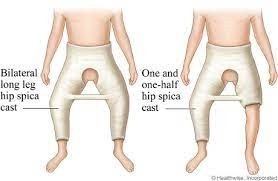Which finding indicates to the nurse that the current therapies are effective for a patient with acute adrenal insufficiency?
Decreasing serum chloride levels
Increasing serum sodium levels
Increasing serum potassium levels
Decreasing blood sucrose levels
The Correct Answer is B
Acute adrenal insufficiency, also known as adrenal crisis, is characterized by low levels of adrenal hormones, particularly cortisol. One of the primary manifestations of adrenal insufficiency is electrolyte imbalance, specifically hyponatremia (low sodium) and hyperkalemia (high potassium). Inadequate cortisol levels can lead to impaired sodium reabsorption in the kidneys, resulting in sodium loss and low serum sodium levels.
When the patient receives appropriate therapies for acute adrenal insufficiency, such as administration of glucocorticoids (e.g., hydrocortisone), the cortisol levels begin to normalize. As a result, the impaired sodium reabsorption improves, leading to an increase in serum sodium levels.
Nursing Test Bank
Naxlex Comprehensive Predictor Exams
Related Questions
Correct Answer is B
Explanation
A likely cause of a low sodium level (hyponatremia) of 128 mEq/L is the administration of hypotonic IV fluids. Hypotonic IV fluids have a lower concentration of solutes compared to the body's fluids, which can lead to dilutional hyponatremia. When these fluids are administered, they can cause water to move into the cells, diluting the sodium concentration in the bloodstream.
Correct Answer is D
Explanation
Hip spica casts are typically used to immobilize the hip joint and are often used in the management of hip dysplasia or after surgery. These casts can cause restricted mobility and limit blood flow to the legs and feet, which can lead to complications such as swelling, decreased circulation, or pressure sores.
Checking capillary refill in the toes is a critical nursing intervention to assess for the presence of adequate circulation and blood flow to the affected limb. If capillary refill is slow or absent, it may indicate compromised circulation and require immediate intervention to prevent further complications.
Palpating a brachial pulse, assessing bilateral radial pulses, or auscultating the heart rate apically are not the priority nursing actions for an infant with a hip spica cast. While monitoring vital signs and circulation are important components of nursing care, the priority at this stage is to assess and manage the immediate postoperative needs of the patient, including monitoring for potential complications related to the hip spica cast.

Whether you are a student looking to ace your exams or a practicing nurse seeking to enhance your expertise , our nursing education contents will empower you with the confidence and competence to make a difference in the lives of patients and become a respected leader in the healthcare field.
Visit Naxlex, invest in your future and unlock endless possibilities with our unparalleled nursing education contents today
Report Wrong Answer on the Current Question
Do you disagree with the answer? If yes, what is your expected answer? Explain.
Kindly be descriptive with the issue you are facing.
